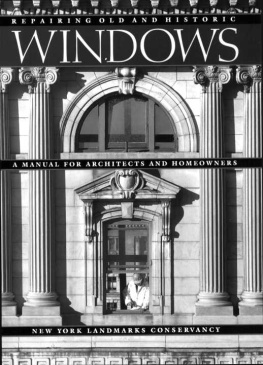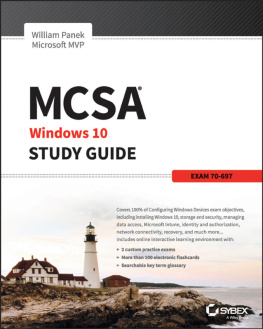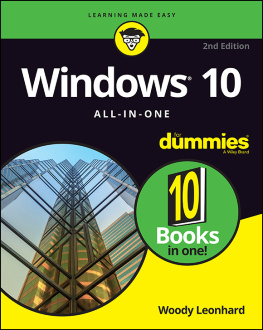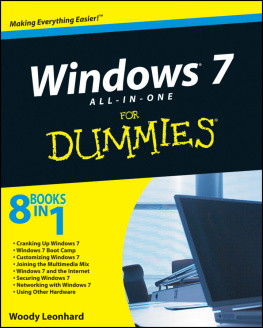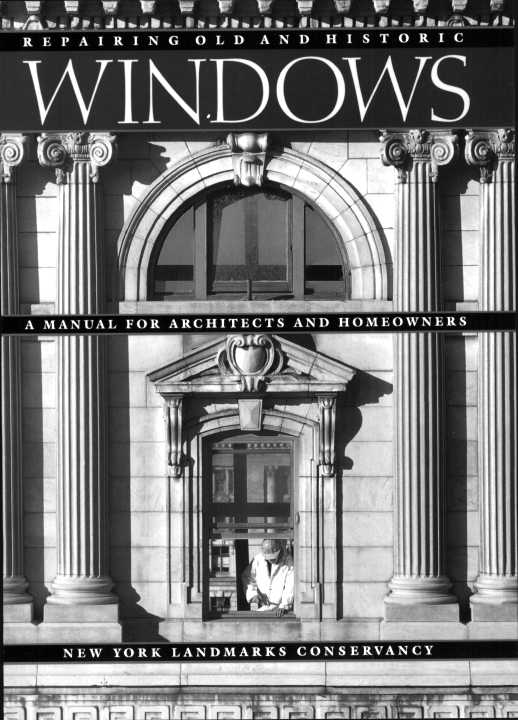





CONTENTS
ACKNOWLEDGMENTS
The subject of window replacement in landmark buildings is no less controversial today than it was eight years ago when the New York Landmarks Conservancy commissioned a study on the subject. A concern for energy effiicienc-ty and the legacy of the oil crisis of the mid1970s, as well as local tax incentives offered through New York's J-51 program, led many owners of architecturally distinguished buildings then being rehabilitated to scrap perfectly serviceable windows for new ones. All preservationists applauded the drive to extend the useful life of these buildings through rehabilitation, but what was being saved? In many cases the replacement of original windows drastically altered a building's appearance and historical character.
The Conservancy responded to this dilemma with a series of questions. How do old windows compare to today's replacement windows with respect to quality of construction, physical performance, and maintenance? Can old windows he upgraded to meet contemporary performance standards? Can new windows be redesigned to resemble traditional designs? These and subsequent questions formed the core of the Conservancy study, conducted in 1985, and the study became the basis for this manual.
The study identified the most prevalent window types in buildings now being restored and compiled information on the current range of available products for window rehabilitation in historic buildings. Approximately 150 manufacturers producing a range of window products were polled and asked for information describing their products. Also requested and submitted were energy test data and specific examples of the use of the products in historic buildings.
The materials submitted by manufacturers and installers were subsequently analzcd to determine the impact and results of the various strategies and products. The study's primary goal was to provide the tools for making responsible decisions. A secondary goal was to indicate areas where further developments in the industry and expanded product lines are needed.
The study was made possible through generous public and private financial support. Grants were awarded from the Design Arts Program of the National Endowment for the Arts and the Solar Cities Program of the Department of Energy as well as from the National Trust for Historic Preservation, J. M. Kaplan Fund, New York State Council on the Arts, DeVac Corporation, Marvin Lumber and Cedar Companv, Pittsburgh Plate Glass Industries Foundation, Schlegel Corporation, and Silverstein Properties.
The data compiled by the study were transformed into a research report by the Ehrenkrantz Group, Architects and Planners, under the direction of the Technical Preservation Services Center of the New York Landmarks Conservancy. The staff of the Ehrenkrantz Group who contributed to the report were Ezra Ehrenkrantz, FAIR, principal; Theodore H. M. Prudon, associate principal; Kate Burns Ottavino, historic preservation specialist; Suzanne Smith, energy analyst; Linda Fiske, administrative assistant; Mark Segalla, consultant; and Susan Swiatosz, consultant.
Another source of information was S. Robert Hastings and W. Richard Crenshaw's "Window Design: Design Strategies to Conserve Energy," a title in the series of publications NBS Building Science Series 104, from the National Bureau of Standards (U.S. Department of Commerce). The glossary was taken in part from the Schlegel Corporation's catalog and in part from the glossary in Speaking of Windows, a publication of the Small Homes Council-Building Research Council connected with the University of Illinois, UrbanaChampaign.
The Conservancy is grateful to the following individuals, who lent their diverse technical expertise while serving as advisers to the study: Jan C. K. Anderson, RESTORE; Barry Donaldson, AIA, Tishman Research Corporation; Andrew Forgatch, Window Systems; Frank Heenan, 1.)cVac Corporation; Marilyn Kaplan, New York State Office of Parks, Recreation, and Historic Preservation; John P. Loguidice, JPL International; Adam F. Ramez, Silverstein Properties; Frank Sanchis, then at the New York City Landmarks Preservation Commission and now with the National Trust for Historic Preservation; John Stoller, Schlegel Corporation; Morris Taylor, Marvin Lumber and Cedar Company; Mark Ten Evck; and Joyce Underberg, Schlegel Corporation.
The staff of the New York Landmarks Conscrvancv who contributed to this project included Susan I-Ienshaw Jones, executive director; Laurie Beckelman, former executive director; Carol Clark and Wesley Haynes, former project directors; and Mark A. Weber, project director; Kevin Murphy and Diane Cohen, former project managers; and Stacey Mink and Anita Rask, administrative assistants.
The Conservancy also wishes to thank The Preservation Press of the National Trust for Historic Preservation for agreeing to publish the project's findings and thereby disseminating this important information to a larger audience.
INTRODUCTION
The purpose of this book is to provide a better understanding of the problems and potential of windows in old buildings. It also otters advice on diagnosis and rehabilitation measures within accepted preservation standards, that is, the 10 standards promulgated by the National Park Service of the U.S. Department of the Interior as the Secretary of the Interior's Standards for Rehabilitation (see page 161).
Anyone considering spending thousands of dollars to replace windows should find the information here helpful. Today's replacement window market is largely uncharted territory. The vast array of replacement windows available readily leads to confusion about which one, if any, is best for a particular situation.
But is replacement really necessary? The authors dispute the claim that the only good window is a new window. Repairing and maintaining an essentially sound window is often a far more sensible approach. Besides retaining the character of the interior and exterior, the existing window may actually be superior to its replacement with respect to materials, details, and construction. Also, when retrofitted with weatherseals, additional glazing, draperies, and shutters, it may have the potential to meet contemporary energy and acoustic characteristics expected of replacement windows.
This guide to window repair will help in analyzing windows, objectively assessing their condition, and tackling problems that affect the residents' or workers' health and comfort while maintaining the building's value.
No one wants to spend much time concentrating on a building's condition, but the fact remains: all windows, new or old, require regular maintenance. Otherwise, they rapidly deteriorate and can damage adjacent parts of the building; in addition, their energy efficiency declines drastically. With fuel costs uncertain, replacement windows may be seen as a means of immediately reducing energy consumption.

